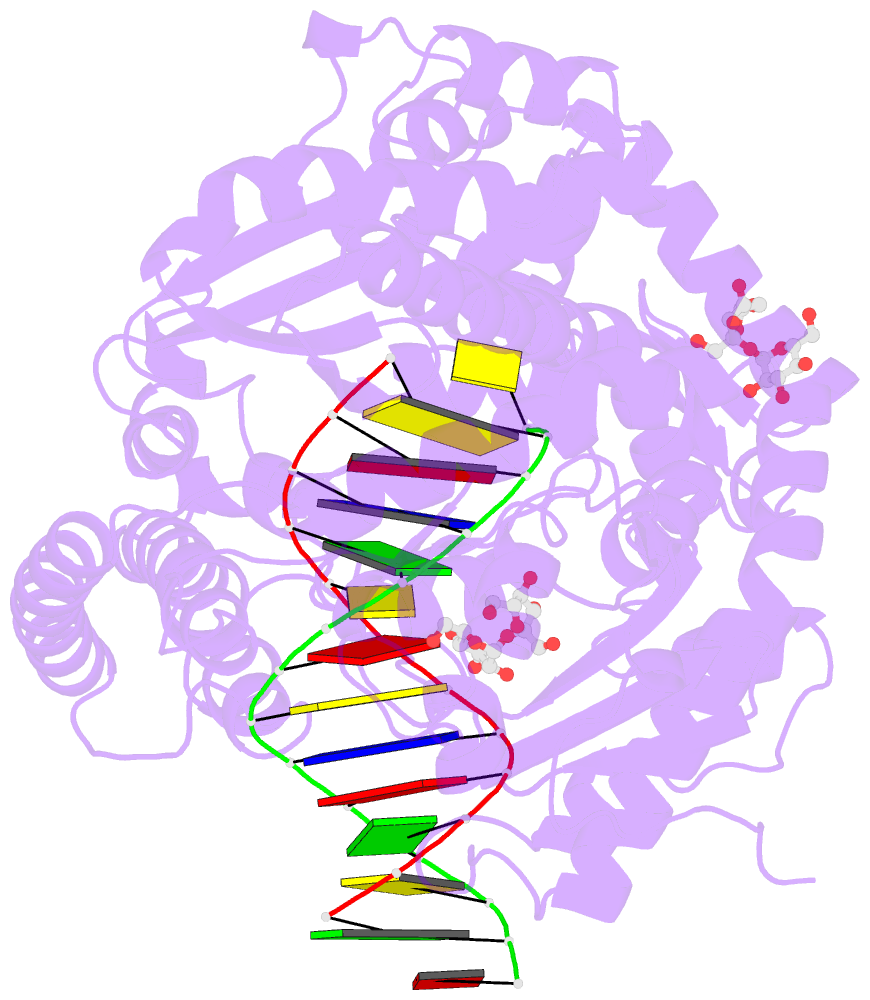Summary information and primary citation
- PDB-id
- 1l5u; SNAP-derived features in text and JSON formats;
DNAproDB
- Class
- transferase-DNA
- Method
- X-ray (1.95 Å)
- Summary
- Crystal structure of bacillus DNA polymerase i fragment product complex with 12 base pairs of duplex DNA following addition of a dttp, a datp, and a dctp residue.
- Reference
- Johnson SJ, Taylor JS, Beese LS (2003): "Processive DNA synthesis observed in a polymerase crystal suggests a
mechanism for the prevention of frameshift mutations." Proc.Natl.Acad.Sci.USA, 100, 3895-3900. doi: 10.1073/pnas.0630532100.
- Abstract
- DNA polymerases replicate DNA by adding nucleotides to a growing primer strand while avoiding frameshift and point mutations. Here we present a series of up to six successive replication events that were obtained by extension of a primed template directly in a crystal of the thermostable Bacillus DNA polymerase I. The 6-bp extension involves a 20-A translocation of the DNA duplex, representing the largest molecular movement observed in a protein crystal. In addition, we obtained the structure of a "closed" conformation of the enzyme with a bound triphosphate juxtaposed to a template and a dideoxy-terminated primer by constructing a point mutant that destroys a crystal lattice contact stabilizing the wild-type polymerase in an "open" conformation. Together, these observations allow many of the steps involved in DNA replication to be observed in the same enzyme at near atomic detail. The successive replication events observed directly by catalysis in the crystal confirm the general reaction sequence deduced from observations obtained by using several other polymerases and further refine critical aspects of the known reaction mechanism, and also allow us to propose new features that concern the regulated transfer of the template strand between a preinsertion site and an insertion site. We propose that such regulated transfer is an important element in the prevention of frameshift mutations in high-fidelity DNA polymerases. The ability to observe processive, high-fidelity replication directly in a crystal establishes this polymerase as a powerful model system for mechanistic studies in which the structural consequences of mismatches and DNA adducts are observed.





